Damn, I just LOVE foraging through my collection of vinyl (and CDs) from the ’60s, ’70s and ’80s and unearthing those hidden gems that have been all but forgotten as time has rolled on…
 Fortunately, many of these great “lost classics” are available today to those who didn’t hang on to their old records, or are too young to have been exposed to them in the first place. Online music services provide a wealth of decades-old music — in fact, so much of it that you can be overwhelmed. Where to start?
Fortunately, many of these great “lost classics” are available today to those who didn’t hang on to their old records, or are too young to have been exposed to them in the first place. Online music services provide a wealth of decades-old music — in fact, so much of it that you can be overwhelmed. Where to start?
That’s where Hack’s Back Pages comes in. Every so often, whenever the mood strikes, I dive deep and come up with a dozen selections that made their mark on me back in the day, and that I still find worthy enough to bring to your attention today.
Feel free to follow along on the Spotify playlist I’ve included at the bottom of this post. I hope you find these tracks as satisfying as I do. Enjoy!
****************
“Many a Mile to Freedom,” Traffic, 1971
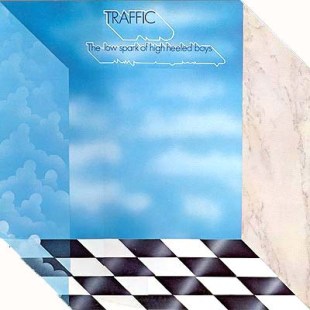 Musical wunderkind Steve Winwood and drummer Jim Capaldi formed Traffic as a quasi folk-jazz-rock hybrid outfit in 1967, with Dave Mason on guitar and Chris Wood on flute. They earned praise in England for their first two records, but Mason soon left and Winwood spent several months in the hugely hyped side project called Blind Faith with his friend Eric Clapton. Winwood then intended on unveiling his first solo LP but it turned into the reformation of Traffic (without Mason) and became the brilliant 1970 album “John Barleycorn Must Die.” By 1971, the group chose to broaden its sound by adding Blind Faith’s Ric Grech on bass and violin, Derek and the Dominos’ Jim Gordon on drums and Rebop Kwaku Baah on percussion, and the result was their best selling album in the US, “The Low Spark of High Heeled Boys.” The epic, haunting title tune justifiably got most of the attention, but another solid deep track not to be ignored is “Many a Mile to Freedom,” a delicious piece Winwood co-wrote with Jim Capaldi’s wife Anna that’s peppered with Chris Wood’s fine flute work and carried by Winwood’s top-flight vocals.
Musical wunderkind Steve Winwood and drummer Jim Capaldi formed Traffic as a quasi folk-jazz-rock hybrid outfit in 1967, with Dave Mason on guitar and Chris Wood on flute. They earned praise in England for their first two records, but Mason soon left and Winwood spent several months in the hugely hyped side project called Blind Faith with his friend Eric Clapton. Winwood then intended on unveiling his first solo LP but it turned into the reformation of Traffic (without Mason) and became the brilliant 1970 album “John Barleycorn Must Die.” By 1971, the group chose to broaden its sound by adding Blind Faith’s Ric Grech on bass and violin, Derek and the Dominos’ Jim Gordon on drums and Rebop Kwaku Baah on percussion, and the result was their best selling album in the US, “The Low Spark of High Heeled Boys.” The epic, haunting title tune justifiably got most of the attention, but another solid deep track not to be ignored is “Many a Mile to Freedom,” a delicious piece Winwood co-wrote with Jim Capaldi’s wife Anna that’s peppered with Chris Wood’s fine flute work and carried by Winwood’s top-flight vocals.
“Running Hard,” Renaissance, 1974
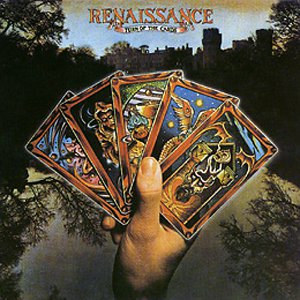 Renaissance was born in 1969 when two ex-Yardbirds (Jim McCarty and Keith Relf) had tired of blues-based rock and wanted to experiment with a blend of classical, rock and folk forms. A revolving door of musicians came and went as the group struggled during their first three years, but eventually Renaissance found a solid core revolving around the astonishing four-octave voice of Annie Haslam and the accomplished piano playing of John Tout. With guitarist Michael Dunford and poet/lyricist Betty Thatcher-Newsinger collaborating on the composing duties, Renaissance began its rise in popularity, with albums like “Prologue” and “Ashes are Burning” getting airplay in Northeast US cities like Cleveland, Philadelphia, New York and Boston. The 1974 album “Turn of the Cards” displayed a more dark, lush, orchestral sound, and that showed up most noticeably on the superb, nine-minute opening track, “Running Hard.” The group’s successful hybrid of classical music, folk and rock served them well for another three LPs (“Scheherazade,” “Novella” and “A Song For All Seasons”) before dissolving in the mid-’80s.
Renaissance was born in 1969 when two ex-Yardbirds (Jim McCarty and Keith Relf) had tired of blues-based rock and wanted to experiment with a blend of classical, rock and folk forms. A revolving door of musicians came and went as the group struggled during their first three years, but eventually Renaissance found a solid core revolving around the astonishing four-octave voice of Annie Haslam and the accomplished piano playing of John Tout. With guitarist Michael Dunford and poet/lyricist Betty Thatcher-Newsinger collaborating on the composing duties, Renaissance began its rise in popularity, with albums like “Prologue” and “Ashes are Burning” getting airplay in Northeast US cities like Cleveland, Philadelphia, New York and Boston. The 1974 album “Turn of the Cards” displayed a more dark, lush, orchestral sound, and that showed up most noticeably on the superb, nine-minute opening track, “Running Hard.” The group’s successful hybrid of classical music, folk and rock served them well for another three LPs (“Scheherazade,” “Novella” and “A Song For All Seasons”) before dissolving in the mid-’80s.
“Dawning is the Day,” The Moody Blues, 1970
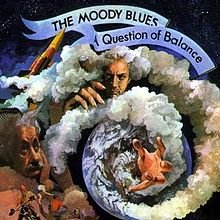 The impressive run of seven albums that established The Moodies as pioneers of the burgeoning progressive rock genre are a veritable treasure trove of lost classics. From 1967’s “Days of Future Passed” through 1972’s “Seventh Sojourn,” for every hit single you instantly recognize (“Ride My Seesaw,” “The Story in Your Eyes,” “I’m Just a Singer in a Rock and Roll Band”) you’ll find another five or six songs well worth checking out. The group boasted five musicians who each brought something intriguing to the mix, from Ray Thomas’s flute to Graeme Edge’s gentle poem-songs, from John Lodge’s rocking bass to Mike Pinder’s Mellotron/keyboard pieces. The most recognizable element of The Moodies’ sound, though, has always been the vocals and melodic songs of guitarist Justin Hayward. On the band’s 1970 LP “A Question of Balance,” you can hear his work most prominently on the hit “Question” and the excellent “It’s Up to You.” Hidden on side two (remember album sides?) is another Hayward beauty, “Dawning is the Day.”
The impressive run of seven albums that established The Moodies as pioneers of the burgeoning progressive rock genre are a veritable treasure trove of lost classics. From 1967’s “Days of Future Passed” through 1972’s “Seventh Sojourn,” for every hit single you instantly recognize (“Ride My Seesaw,” “The Story in Your Eyes,” “I’m Just a Singer in a Rock and Roll Band”) you’ll find another five or six songs well worth checking out. The group boasted five musicians who each brought something intriguing to the mix, from Ray Thomas’s flute to Graeme Edge’s gentle poem-songs, from John Lodge’s rocking bass to Mike Pinder’s Mellotron/keyboard pieces. The most recognizable element of The Moodies’ sound, though, has always been the vocals and melodic songs of guitarist Justin Hayward. On the band’s 1970 LP “A Question of Balance,” you can hear his work most prominently on the hit “Question” and the excellent “It’s Up to You.” Hidden on side two (remember album sides?) is another Hayward beauty, “Dawning is the Day.”
“St. Charles,” Jefferson Starship, 1976
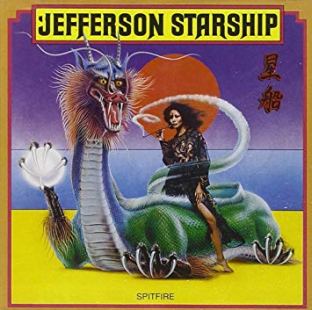 The Jefferson Airplane didn’t so much crash and burn as peter out, but founder Paul Kantner always had his eye on reimagining the Jefferson name to further explore his passion for science fiction and fantasy. First came his solo LP “Blows Against the Empire” in 1970, where the loose crew of musicians who participated was first referred to as Jefferson Starship. On the 1974 LP “Dragonfly,” with guitarist Craig Chaquico, bassist Pete Sears, keyboardist David Freiberg, violinist Papa John Kreach and drummer Johnny Barbata joining Kantner and rock icon Grace Slick, Jefferson Starship was officially launched with stellar material like “Ride the Tiger,” “All Fly Away” and “Caroline.” Airplane founder Marty Balin joined the lineup full-time on the #1 LP “Red Octopus” in 1975, which included the huge hit single “Miracles.” The band played to sold-out arenas in 1976 when it toured in support of the follow-up LP, “Spitfire.” My favorite track from that LP is the soaring “St. Charles,” featuring the vocal blend of Kantner and Slick.
The Jefferson Airplane didn’t so much crash and burn as peter out, but founder Paul Kantner always had his eye on reimagining the Jefferson name to further explore his passion for science fiction and fantasy. First came his solo LP “Blows Against the Empire” in 1970, where the loose crew of musicians who participated was first referred to as Jefferson Starship. On the 1974 LP “Dragonfly,” with guitarist Craig Chaquico, bassist Pete Sears, keyboardist David Freiberg, violinist Papa John Kreach and drummer Johnny Barbata joining Kantner and rock icon Grace Slick, Jefferson Starship was officially launched with stellar material like “Ride the Tiger,” “All Fly Away” and “Caroline.” Airplane founder Marty Balin joined the lineup full-time on the #1 LP “Red Octopus” in 1975, which included the huge hit single “Miracles.” The band played to sold-out arenas in 1976 when it toured in support of the follow-up LP, “Spitfire.” My favorite track from that LP is the soaring “St. Charles,” featuring the vocal blend of Kantner and Slick.
“Angel Lady (Come Just in Time),” Boz Scaggs, 1974
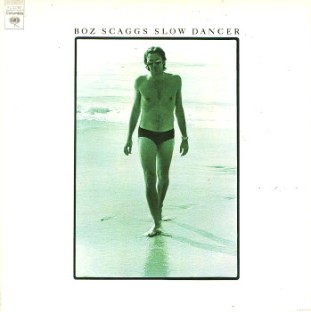 Scaggs got his start in the late ’60s as a guitarist in San Francisco as part of the original lineup of the Steve Miller Band, and by 1969, he was testing the waters with a self-titled solo LP that included the incredible “Loan Me a Dime” with Duane Allman guesting on lead guitar. It wasn’t until 1976 when he had his commercial breakthrough with the outstanding “Silk Degrees” LP, a catchy collection of slick “blue-eyed soul” that got plenty of airplay (particularly “It’s Over,” “What Can I Say,” “Lido Shuffle” and the #3 hit “Lowdown”) in the age of disco’s rise in popularity. Before that fame arrived, Scaggs released a strong but overlooked album of R&B-laced songs in 1974 called “Slow Dancer,” produced by Motown great Johnny Bristol. “You Make It So Hard to Say No” and “Pain of Love” have Bristol’s soul imprint on them, but the finest moment here is “Angel Lady (Come Just in Time),” which compels you to get up and dance to its mid-tempo groove.
Scaggs got his start in the late ’60s as a guitarist in San Francisco as part of the original lineup of the Steve Miller Band, and by 1969, he was testing the waters with a self-titled solo LP that included the incredible “Loan Me a Dime” with Duane Allman guesting on lead guitar. It wasn’t until 1976 when he had his commercial breakthrough with the outstanding “Silk Degrees” LP, a catchy collection of slick “blue-eyed soul” that got plenty of airplay (particularly “It’s Over,” “What Can I Say,” “Lido Shuffle” and the #3 hit “Lowdown”) in the age of disco’s rise in popularity. Before that fame arrived, Scaggs released a strong but overlooked album of R&B-laced songs in 1974 called “Slow Dancer,” produced by Motown great Johnny Bristol. “You Make It So Hard to Say No” and “Pain of Love” have Bristol’s soul imprint on them, but the finest moment here is “Angel Lady (Come Just in Time),” which compels you to get up and dance to its mid-tempo groove.
“Chestnut Mare,” The Byrds, 1970
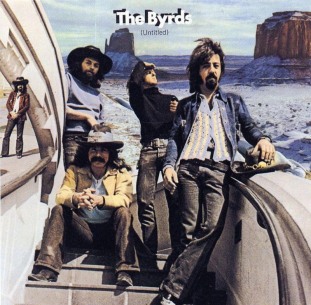 Through every phase of The Byrds’ recording career, it was Roger McGuinn’s plaintive vocals and songs that dominated the proceedings. In 1969, following the pioneering country rock LP “Sweetheart of the Rodeo,” McGuinn began a collaboration with Broadway impresario Jacques Levy for a country-rock stage production of Henrik Ibsen’s “Peer Gynt,” to be entitled “Gene Tryp” (an anagram of the title of Ibsen’s play). Ultimately, the stage production was abandoned, but among the songs that McGuinn and Levy had written for the project, four ended up on the Byrds’ next album, curiously entitled “(Untitled)“ due to a misunderstanding by the record company. It’s a double album, with one live disc and one with new studio tracks. The best one, to my ears, is “Chestnut Mare,” a fine tune about an uncooperative horse who defiantly resists attempts to tame her. McGuinn’s trademark electric 12-string and Clarence White’s country-style acoustic picking dominate the arrangement.
Through every phase of The Byrds’ recording career, it was Roger McGuinn’s plaintive vocals and songs that dominated the proceedings. In 1969, following the pioneering country rock LP “Sweetheart of the Rodeo,” McGuinn began a collaboration with Broadway impresario Jacques Levy for a country-rock stage production of Henrik Ibsen’s “Peer Gynt,” to be entitled “Gene Tryp” (an anagram of the title of Ibsen’s play). Ultimately, the stage production was abandoned, but among the songs that McGuinn and Levy had written for the project, four ended up on the Byrds’ next album, curiously entitled “(Untitled)“ due to a misunderstanding by the record company. It’s a double album, with one live disc and one with new studio tracks. The best one, to my ears, is “Chestnut Mare,” a fine tune about an uncooperative horse who defiantly resists attempts to tame her. McGuinn’s trademark electric 12-string and Clarence White’s country-style acoustic picking dominate the arrangement.
“Pretty Princess,” Loggins and Messina, 1976
 Many people may not be aware that Jim Messina was a staff producer at Columbia Records in 1970 when he was brought in to help mold an untested new talent named Kenny Loggins. Messina contributed so much to Loggins’ debut (songwriting, singing, playing, arranging and producing) that it ended up being called “Kenny Loggins with Jim Messina Sittin’ In.” That, in turn, resulted in the two men officially embarking on a six-year career as a duo, marked by five successful studio LPs, two live albums and a huge hit single (“Your Mama Don’t Dance”). There’s so much great material to be found there, but I want to focus on “Pretty Princess,” a brilliant track from their final LP, “Native Sons.” I’ve always been very fond of it, not as much for its musical beauty as for its lyrics, which tell a story that seemed to closely mirror a relationship I had shortly after the album’s release. A man and a woman who had been merely friends found themselves growing into much more than that, despite the fact that she was beholden to someone else.
Many people may not be aware that Jim Messina was a staff producer at Columbia Records in 1970 when he was brought in to help mold an untested new talent named Kenny Loggins. Messina contributed so much to Loggins’ debut (songwriting, singing, playing, arranging and producing) that it ended up being called “Kenny Loggins with Jim Messina Sittin’ In.” That, in turn, resulted in the two men officially embarking on a six-year career as a duo, marked by five successful studio LPs, two live albums and a huge hit single (“Your Mama Don’t Dance”). There’s so much great material to be found there, but I want to focus on “Pretty Princess,” a brilliant track from their final LP, “Native Sons.” I’ve always been very fond of it, not as much for its musical beauty as for its lyrics, which tell a story that seemed to closely mirror a relationship I had shortly after the album’s release. A man and a woman who had been merely friends found themselves growing into much more than that, despite the fact that she was beholden to someone else.
“Rosie,” Tom Waits, 1973
 Waits, with his gravelly voice and gritty songs about the underbelly of American society, has been around now for many decades but has never seen much in the way of sales or chart success. He has a loyal cult following and has been widely admired by all kinds of musical icons like Bob Dylan and the late David Bowie. He was inducted into the Rock and Roll Hall of Fame in 2011 and is on Rolling Stone’s list of the 100 Greatest Songwriters of All Time. If you know nothing about Waits or his music, I urge you to spend some time perusing his catalog, and I would start with the album that started him on his way, the 1973 debut called “Closing Time.” This is an album I love to put on when it’s a cold and rainy Sunday afternoon and I’m feeling a bit blue. It’s hard to pick a favorite here, but I guess I’ll go with “Rosie,” full of angst and raw emotion about the girl who got away.
Waits, with his gravelly voice and gritty songs about the underbelly of American society, has been around now for many decades but has never seen much in the way of sales or chart success. He has a loyal cult following and has been widely admired by all kinds of musical icons like Bob Dylan and the late David Bowie. He was inducted into the Rock and Roll Hall of Fame in 2011 and is on Rolling Stone’s list of the 100 Greatest Songwriters of All Time. If you know nothing about Waits or his music, I urge you to spend some time perusing his catalog, and I would start with the album that started him on his way, the 1973 debut called “Closing Time.” This is an album I love to put on when it’s a cold and rainy Sunday afternoon and I’m feeling a bit blue. It’s hard to pick a favorite here, but I guess I’ll go with “Rosie,” full of angst and raw emotion about the girl who got away.
“All I Need,” Batdorf and Rodney, 1972
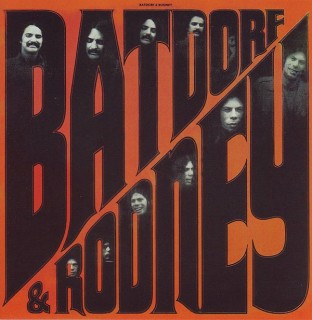 At the top my list of artists who should have been rewarded with much more commercial success is this duo of singer-guitarist talents. John Batdorf wrote and sang most of the songs that appear on their two exemplary Atlantic LPs, 1971’s “Off the Shelf” and 1972’s “Batdorf and Rodney.” Rodney provided the jazzy acoustic lead parts and chipped in on backing harmonies as well. They were shepherded along by Atlantic guru Ahmet Ertegun, which makes their chart disappointment all the more puzzling. Personally, I’d take the music of Batdorf and Rodney over many of the more commercially successful acts of that era. “Can You See Him,” “Oh My Surprise,” “By Today,” “You Are the One,” “Home Again” — all of these tunes eclipse most of the work by Seals and Crofts or Bread, just to name two. I’m particularly partial to “All I Need,” a thoughtful song from the second album.
At the top my list of artists who should have been rewarded with much more commercial success is this duo of singer-guitarist talents. John Batdorf wrote and sang most of the songs that appear on their two exemplary Atlantic LPs, 1971’s “Off the Shelf” and 1972’s “Batdorf and Rodney.” Rodney provided the jazzy acoustic lead parts and chipped in on backing harmonies as well. They were shepherded along by Atlantic guru Ahmet Ertegun, which makes their chart disappointment all the more puzzling. Personally, I’d take the music of Batdorf and Rodney over many of the more commercially successful acts of that era. “Can You See Him,” “Oh My Surprise,” “By Today,” “You Are the One,” “Home Again” — all of these tunes eclipse most of the work by Seals and Crofts or Bread, just to name two. I’m particularly partial to “All I Need,” a thoughtful song from the second album.
“Buzzin’ Fly,” Tim Buckley, 1969
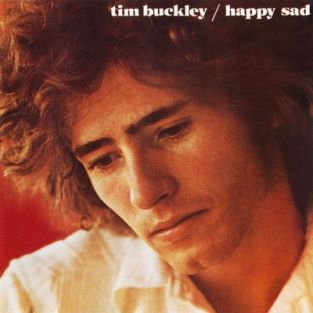 Born in New York state but raised in California, Tim Buckley was a singer-songwriter maverick, never fully comfortable with his talents nor the various genres with which he continually experimented. His self-titled debut in 1966 and 1967 follow-up effort, “Goodbye and Hello,” showcased his early folk leanings, but for me, his best work can be found on the 1969 LP “Happy Sad,” which marked the beginning of his forays into jazz elements and freeform scat singing. The 12-minute track “Gypsy Woman,” which became a mainstay of his live performances, is the best example of that style, which would become more pervasive over his next several albums, even though it seemed to alienate his original fan base. Buckley’s recorded apex, in my view, is the dreamy “Buzzin’ Fly,” highlighted by the unusual vibraphone sounds of David Friedman and his friend Lee Underwood’s guitar. Buckley died of a drug overdose in 1975. His son Jeff was a highly acclaimed singer-songwriter too, until his drowning death in 1997.
Born in New York state but raised in California, Tim Buckley was a singer-songwriter maverick, never fully comfortable with his talents nor the various genres with which he continually experimented. His self-titled debut in 1966 and 1967 follow-up effort, “Goodbye and Hello,” showcased his early folk leanings, but for me, his best work can be found on the 1969 LP “Happy Sad,” which marked the beginning of his forays into jazz elements and freeform scat singing. The 12-minute track “Gypsy Woman,” which became a mainstay of his live performances, is the best example of that style, which would become more pervasive over his next several albums, even though it seemed to alienate his original fan base. Buckley’s recorded apex, in my view, is the dreamy “Buzzin’ Fly,” highlighted by the unusual vibraphone sounds of David Friedman and his friend Lee Underwood’s guitar. Buckley died of a drug overdose in 1975. His son Jeff was a highly acclaimed singer-songwriter too, until his drowning death in 1997.
“For You,” Bruce Springsteen, 1973
 Before there was an E Street Band, Bruce Springsteen was signed by Columbia Records honcho John Hammond as a solo artist, in the Bob Dylan mold, largely because Springsteen’s earliest songs likewise featured an overabundance of lyrics, delivered over lively acoustic tunes. Although he had his eye on becoming an all-out rocker with a full band, Springsteen relented and allowed his debut LP, “Greetings From Asbury Park, N.J.,” to feature more subdued material like “Mary, Queen of Arkansas” and “The Angel.” In turn, Hammond gave in and permitted Bruce to record two uptempo tracks — “Blinded By the Light” and “Spirits in the Night” — that included sax man Clarence Clemons and the rest of the soon-to-be E Street Band. Riding the balance between these two approaches were the three songs I admire most, which became staples in his live repertoire for the next few years: “Growin’ Up,” “It’s Hard to Be a Saint in the City” and the piano-based “For You,” which was often played at a much slower tempo in concert.
Before there was an E Street Band, Bruce Springsteen was signed by Columbia Records honcho John Hammond as a solo artist, in the Bob Dylan mold, largely because Springsteen’s earliest songs likewise featured an overabundance of lyrics, delivered over lively acoustic tunes. Although he had his eye on becoming an all-out rocker with a full band, Springsteen relented and allowed his debut LP, “Greetings From Asbury Park, N.J.,” to feature more subdued material like “Mary, Queen of Arkansas” and “The Angel.” In turn, Hammond gave in and permitted Bruce to record two uptempo tracks — “Blinded By the Light” and “Spirits in the Night” — that included sax man Clarence Clemons and the rest of the soon-to-be E Street Band. Riding the balance between these two approaches were the three songs I admire most, which became staples in his live repertoire for the next few years: “Growin’ Up,” “It’s Hard to Be a Saint in the City” and the piano-based “For You,” which was often played at a much slower tempo in concert.
“See My Way,” Blodwyn Pig, 1969
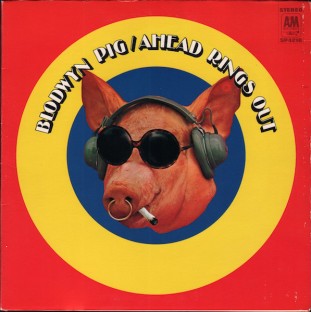 Thanks to Cream and others, most aspiring British musicians in the mid-to-late ’60s became aficionados of the blues, or at least the blues-based rock that Cream had developed after hearing the original music of American bluesmen like Albert King, Buddy Guy and Robert Johnson. One of these ragtag groups was Jethro Tull, whose debut LP, the presciently named “This Was,” offered mostly blues stylings. But when flutist-singer-songwriter Ian Anderson pushed the group in a more rock/folk direction, original guitarist Mick Abrahams left the band and went off to form Blodwyn Pig to continue his interest in blues music. Their debut, “Ahead Rings Out,” reached the Top Ten in England, carried by Abrahams’ guitar and Jack Lancaster’s wailing sax on tracks like “Dear Jill” and “It’s Only Love.” The best song, in my opinion, was “See My Way,” which appears on the US pressing of the album but was left off the UK album and held back until the group’s second album, 1970’s “Getting to This.”
Thanks to Cream and others, most aspiring British musicians in the mid-to-late ’60s became aficionados of the blues, or at least the blues-based rock that Cream had developed after hearing the original music of American bluesmen like Albert King, Buddy Guy and Robert Johnson. One of these ragtag groups was Jethro Tull, whose debut LP, the presciently named “This Was,” offered mostly blues stylings. But when flutist-singer-songwriter Ian Anderson pushed the group in a more rock/folk direction, original guitarist Mick Abrahams left the band and went off to form Blodwyn Pig to continue his interest in blues music. Their debut, “Ahead Rings Out,” reached the Top Ten in England, carried by Abrahams’ guitar and Jack Lancaster’s wailing sax on tracks like “Dear Jill” and “It’s Only Love.” The best song, in my opinion, was “See My Way,” which appears on the US pressing of the album but was left off the UK album and held back until the group’s second album, 1970’s “Getting to This.”
******************
Saw Renaissance last year in a small club. Annie is the only person from the old lineup still around, and she manages the band in her “spare time.”
LikeLike
Damn, what a voice. Saw her in 1976. Love to see her again…
LikeLike